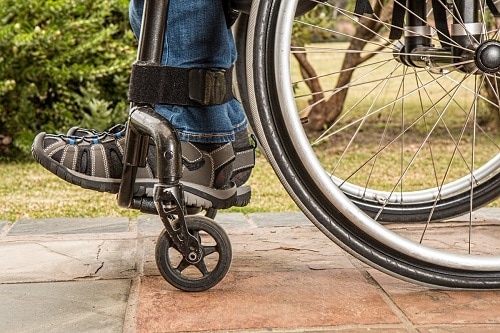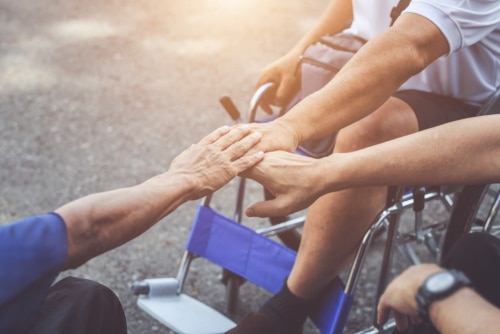The longer you navigate disability services and/or the National Disability Insurance Scheme, the more likely you are to run into challenges. Where do you turn to for help in overcoming these challenges? Enter the National Disability Advocacy Program.
Heard about it but unsure what it does or how it can help you? On the eve of Disability Action Week we thought it appropriate to talk about where you can head for assistance in fighting for your rights. Read on…
Table of contents

What is the National Disability Advocacy Program?
The National Disability Advocacy Program (NDAP) was built by the Australian Government’s Department of Social Services to provide advocacy support services for people with disability. It is one of the department’s many program and services for people with disability.
Advocacy is any action that speaks in favour of, recommends, argues for a cause, supports or defends, or pleads on behalf of others. An advocate works on behalf of a person with disability to help them speak out and defend their rights, to express their views and wishes to others. Advocates must be independent and be on the side of the person with disability and no-one else’s.
The essence of the National Disability Advocacy Program is ensuring the rights of people with disability are protected, promoted and defended. Part of its remit is ‘acting in a partisan manner’ and ‘ensuring duty of care at all times’.
It recognises that the more people and businesses you encounter as someone who uses disability services, the greater your chances of experiencing a difficulty or two. And with it, the need for assistance in resolving these problems.
This disability advocacy program takes your side in supporting your cause as an individual. It recognises you have just as many rights as anyone else. Itprovides the umbrella support that enables problem-solving to happen, via a number of avenues.

Disability advocacy organisations
The National Disability Advocacy Program funds well over 50 state and territory based disability advocacy organisations. They are the front line in helping you overcome your hurdles.
These organisations are either:
- Generalist (providing support to people with any type of disability or cultural background), or
- Specialist (providing support to people with a particular disability or cultural background, or with specific issues like housing or employment)
Also note that while this article focuses on the National Disability Advocacy Program, there are lots of other disability advocacy organisations across Australia that are funded by other means. The good news is that – like the funded organisations – many of these can also be found via the advocacy finder mentioned below.
National Disability Advocacy Program advocacy models
The National Disability Advocacy Program recognises that people with disability have varying capabilities. It also recognises they have wide-ranging needs and issues – everyone is different.
So, it divides the services provided by its organisations into six types of disability advocacy models. Each have their own benefit and strength. And each are available to you, regardless of whether you are a National Disability Insurance Scheme participant.
Six distinct models
The National Disability Advocacy Program website outlines these as follows:
- Citizen advocacy: matches people with disability with volunteers.
- Family advocacy: helps parents and family members advocate on behalf of the person with disability for a particular issue.
- Individual advocacy: upholds the rights of individual people with disability by working on discrimination, abuse and neglect.
- Legal advocacy: upholds the rights and interests of individual people with disability by addressing the legal aspects of discrimination, abuse and neglect.
- Self advocacy: supports people with disability to advocate for themselves, or as a group.
- Systemic advocacy: seeks to remove barriers and address discrimination to ensure the rights of all people with disability.
So, different types of advocacy organisations help you achieve your goals via different means. You choose which avenue best suits you and your individual abilities, needs and wants.
Familiarise yourself with the different disability advocacy models in this YouTube video. Then, this advocacy finder will help you to find a suitable organisation.
But wait. It is important that you have tried to resolve your problem yourself first. It may be that a simple solution is only a phone call or email away. If you are an NDIS participant, your NDIS local area coordinator (LAC) or support coordinator is the ideal initial step. If you have no luck there, that is when you move onto finding an advocate.

Individual disability advocacy – how does it help?
‘Individual advocacy’ organisations raise awareness of your problems and help you navigate the situation in order to seek solutions. This model might also work hand in hand with self advocacy, in helping you resolve your issue while encouraging you (and giving you the tools) to stand up for your rights.
One of the main reasons you would contact one of these types of organisations is to assist with issues you have with the NDIS and/or service providers. For example, when you want to lodge a complaint or change something about the support you receive.
You may be unhappy with your treatment by a therapist, you could be having a problem with one of your support staff, you may want to move from your NDIS-provided share home… Many situations may call for individual advocacy assistance.
Don’t be afraid to lodge a complaint or ask for a review of your situation! You have every right to be 100% comfortable with and confident in the service and treatment you receive from disability providers.
An individual advocacy agency will empower you by putting you in a position that sees your issues put at the forefront. This will help you overcome any barriers. They will ensure you are listened to. They work hard to ensure you can exercise your rights.
Note that they do not provide counselling or make decisions on your behalf. Nor do they provide mediation or case management. They work beside you in advocating for the change that will improve the situation you are having difficulty with.
Put your best foot forward
You have decided on the best disability advocacy model for your circumstances. Then you used the advocacy finder to source one or more organisations to assist. Now, your next move is contacting them.
Ensure you have several clear points (perhaps write or type them down if possible) ready to make. You want to explain your problem well and the steps you have taken in trying to solve it up to this point. And you want to explain what solution or outcome you want to achieve.
When your chosen organisation knows all the details they are well armed to work with you to find a solution. They will be the guiding light down the path towards fixing the problem. Best of luck!








